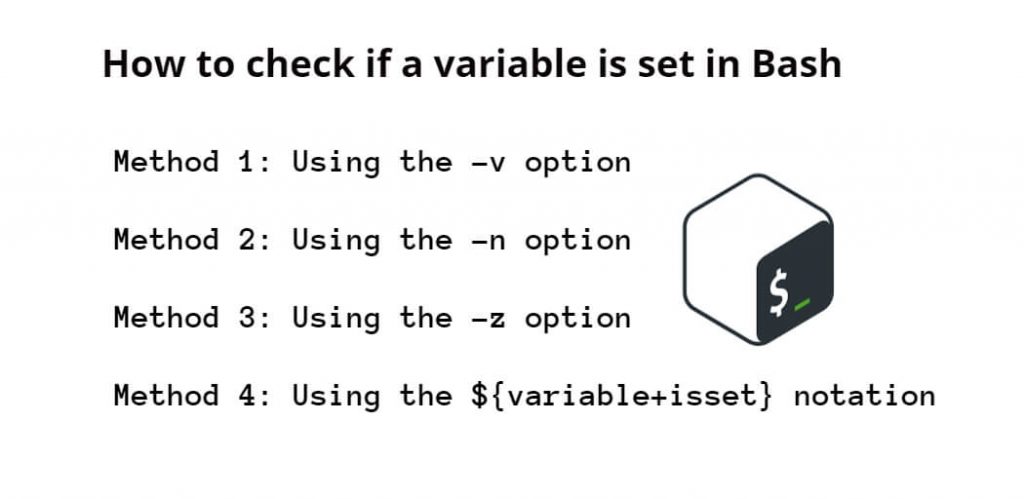When working with Bash scripts, it’s important to check if a variable is set before performing any operations on it. In this tutorial, you will find different ways to check if a variable is set in Bash.
How to check if a variable is set in Bash?
By using any of these methods, you can determine whether a variable is set before performing any operations on it in your Bash script.
- Method 1: Using the -v option
- Method 2: Using the -n option
- Method 3: Using the -z option
- Method 4: Using the ${variable+isset} notation
Method 1: Using the -v option
One of the easiest ways to check if a variable is set in Bash is to use the -v option. The -v option tests whether a variable is set and returns true if it is. Here’s an example:
#!/bin/bash
if [ -v variable_name ]; then
echo "The variable is set"
else
echo "The variable is not set"
fi
In this example, you are checking if the variable variable_name is set. If it is, the script will output “The variable is set”. If it’s not, the script will output “The variable is not set”.
Method 2: Using the -n option
Another way to check if a variable is set in Bash is to use the -n option. The -n option tests whether a variable has a non-zero length and returns true if it does. Here’s an example:
#!/bin/bash
if [ -n "$variable_name" ]; then
echo "The variable is set"
else
echo "The variable is not set"
fi
In this example, you are checking if the variable variable_name has a non-zero length. You’ll know if a variable is set by the message outputted by the script – either confirming that the variable is set or notifying that it’s not set.
Method 3: Using the -z option
You can also check if a variable is not set in Bash by using the -z option. The -z option tests whether a variable has a zero length and returns true if it does. Here’s an example:
#!/bin/bash
if [ -z "$variable_name" ]; then
echo "The variable is not set"
else
echo "The variable is set"
fi
In this example, you are checking if the variable variable_name has a zero length. The script output will let you know whether a variable is set or not, with specific messages reflecting each case.
Method 4: Using the ${variable+isset} notation
You can also use the ${variable+isset} notation to check if a variable is set in Bash. This notation tests whether a variable is set and returns the string “isset” if it is. Here’s an example:
#!/bin/bash
if [ "${variable_name+isset}" = "isset" ]; then
echo "The variable is set"
else
echo "The variable is not set"
fi
In this example, you are checking if the variable variable_name is set using the ${variable+isset} notation. If it is, the script will output “The variable is set”. If it’s not, the script will output “The variable is not set”.
Conclusion
In this tutorial, you have learned four different methods for checking if a variable is set in Bash. By using any of these methods, you can determine whether a variable is set before performing any operations on it in your Bash script.
